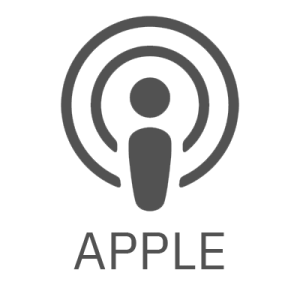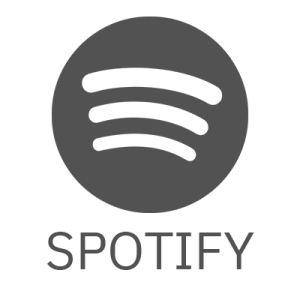How can leaders support high performers through organizational change? Join Dr. Janet Pilcher to hear actionable strategies for managing resistance to change among top performers. Listen now to hear how leaders can effectively guide employees through each phase of change, ensure a smoother transition process, and maintain high performance through organizational shifts.
This episode addresses questions such as:
- What are the four phases of change, and why are they important to understand?
- Why do high performers sometimes struggle with change despite their past successes?
- How can leaders involve high performers throughout the change process?
Latest Episodes
[Intro music plays in the background.]
Janet Pilcher: Hello everyone, welcome to today’s show, Accelerate Your Performance. I’m your host, Janet Pilcher. We continue to focus on the outcomes, tactics, and tools in my book, Hardwiring Excellence in Education.
Today, we focus on how we demonstrate strong leadership skills that help us manage resistance to change. What do we know about change that helps us manage resistance? It’s constant, not episodic, according to John Cotter. It’s occurring all the time, and it’s all around us.
Change requires people to be uncomfortable and we are anxious about experiencing discomfort. In many instances, we just simply dislike it. People need others to help them manage and work through the discomfort when changes occur. The level of help needed depends on the intensity of the change. That’s what we know about change.
To better understand how we manage resistance, let’s now talk about the individual phases of change, the phases we go through when we are making a change. As I talk about these phases, think about a time when you needed to learn something new that made you anxious. You wondered if you would be able to do it. You were delighted when there were people there to help you.
Now think about students in our classrooms learning something new. They depend on their teachers to help them. Students need that extra push to challenge themselves. Our best teachers know just the right amount of push each student needs. So think about yourself or your students going through change as we talk about the four phases of individual change.
They are unconsciously unskilled, consciously unskilled, consciously skilled, and unconsciously skilled. The four phases of change provide valuable insights into individuals’ transition journey.
So let’s talk about the first phase, unconsciously unskilled. At the onset of change, individuals find themselves in a state of unconscious incompetence. That’s what it feels like. They’re new to a role, process, or skill, maybe unaware of what they don’t know. This phase is characterized by a sense of unfamiliarity and perhaps a lack of confidence in navigating the new terrain.
Let me kind of connect it to an experience that I had when I did something new and had to experience change. Several years ago, we bought an RV. We picked one out, made a decision on the one we wanted, and made the purchase. I was really excited about going on that first trip. I saw the salesperson work the gadgets in the RV and thought, “hey, this is pretty easy.” And then the RV instructor, so to speak, came over and walked us through every aspect of the RV. And although a little overwhelming, I thought, “I can do this.” So I then was excited and ready to go with my new RV, a change, something I’ve never done before.
So now let’s talk about phase two. When we move from that place to what phase two is called as consciously unskilled, as individuals progress, they enter a phase of conscious incompetence. They become aware of the gaps in their knowledge or skill set, recognizing the distance between their current abilities and the level required for success. This awareness often leads to feelings of uncertainty and a reluctance to fully embrace the change.
So let’s back to my RV story. So now I’m on my first camping trip, start the first step in the setup process and realize I don’t know what to do or the specifics of how to do something. What I once thought I knew, I realized, “oh, maybe I don’t know how to do it as well as I thought I could. And what if I mess up?” So I became very anxious and wish I had someone who knew what they were doing to help me when I was going through that process of change. I was consciously unskilled. I knew I didn’t know how to do what was important to know.
So then the next phase is phase three, consciously skilled. With time and effort, individuals transition into a phase of conscious confidence. They acquire the necessary skills and knowledge, though they may still require reminders or guidance to execute tasks effectively. Despite understanding the need for change, there may linger a sense of unease or resistance to fully embracing it.
So in my RV, after doing the setup a few times and gaining confidence, I know that I can do it, and if I have a challenge, in many instances I feel like I can solve it, but if there’s a new challenge, I’m still a little nervous and a little anxious.
And then we move to the last phase, unconsciously skilled. Finally, individuals reach a stage of unconscious competence. Tasks once deemed challenging become second nature, executed effortlessly and without conscious thought. At this stage, individuals have fully integrated the change into their routine and can navigate through it with ease. And so over time, in my RV, after I had set it up enough time and became routine in terms of what to do and I’d done it enough, it started becoming second nature. The routine way of setting up the RV was now part of what I knew and how to do it without too much thought. Even when something new was before me, I had more confidence now that I knew how to routinely set it up. That it wasn’t even something I had to think about too much.
So when do we need the most help? It’s at that critical learning point when we hit that point where we know we don’t know something and become anxious. We need someone to help us get to unconsciously to move through the phases of the four phases, but it’s at that phase of consciously unskilled when we get really nervous. We need that guidance and help to move from that phase to consciously skilled. We need good teaching and good coaching to help us move from that second phase to that third phase.
We’ve talked about times when we’re a novice and going through the phases of change, but you know now sometimes we have to focus on other people who also have challenges. Our high performers also struggle with change and at times can become some of our strongest resistors.
Why? Because they’re accustomed to being successful and they like that feeling, they’ve been there for quite a while and they don’t want to start with learning something new because now they have to experience discomfort when they haven’t had to be uncomfortable for quite some time.
So what do we do as leaders to help high performers manage the change? Well, for one thing, we don’t simply expect them to manage the change without difficulty because they’re high performers. With high performers, we continue to reinforce their value. We have confidence in their ability to achieve high performance with the change and we express that. We express that we need them to work through this with us to be a model for others because others know that they’ve been high performers.
We consciously gain their input as the change occurs and that begins to build a level of comfort for them to move them back into a space where they know that they’re valued even when they’re experiencing that change. And we recognize them along the way. They need it as much or more than anyone.
For all of us at any performance level and at any time in an organization, we all feel anxious when changes occur. Our job as leaders is to build clarity around expectations because change isn’t optional, and we give people a chance to come with us by coaching people along the way. At some point people will choose to change and come with us or not and chart a different path from the one we are on.
What we do with individuals who make a choice to not change, what do we do with them when they don’t change, is a discussion topic for another day. What I’ve found, though, is most people will come with us if we coach and guide them through the change. So that’s where we start.
[Outro music plays in the background.]
Next week I’ll interview Dr. Charlotte Boling who will talk about her real-time coaching experiences as she’s applied that resistance to change and the way we manage through that change and how she’s managed that with some of her partners focusing on high performers and how those high performers have managed to make significant changes.
And the following week we will dive into a conversation with the leader at one of our partner organizations to provide how she helped some of her high performers manage change at her school.
So I hope you join us next week and every week on Accelerate Your Performance.
This week, recognize when you are managing through the individual phases of change and how each of those phases make you feel. Because when we understand how we feel, we then begin to have empathy for how others feel. Have a great week everyone.








